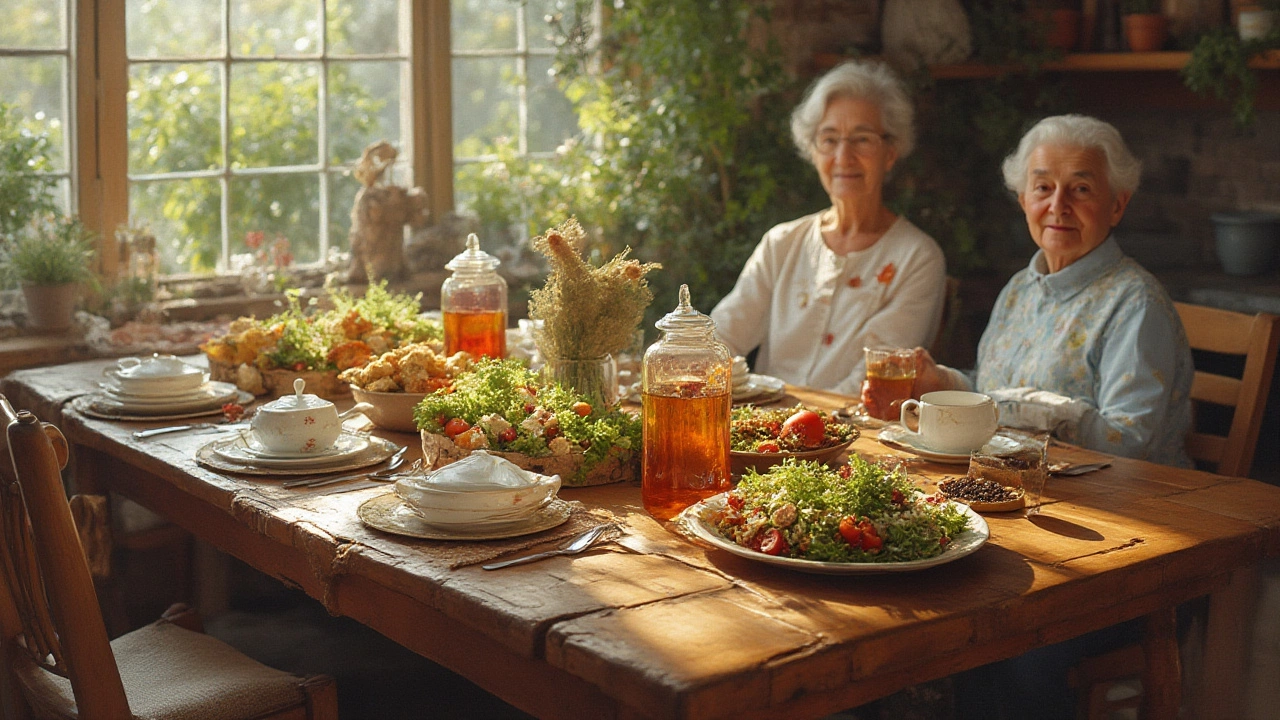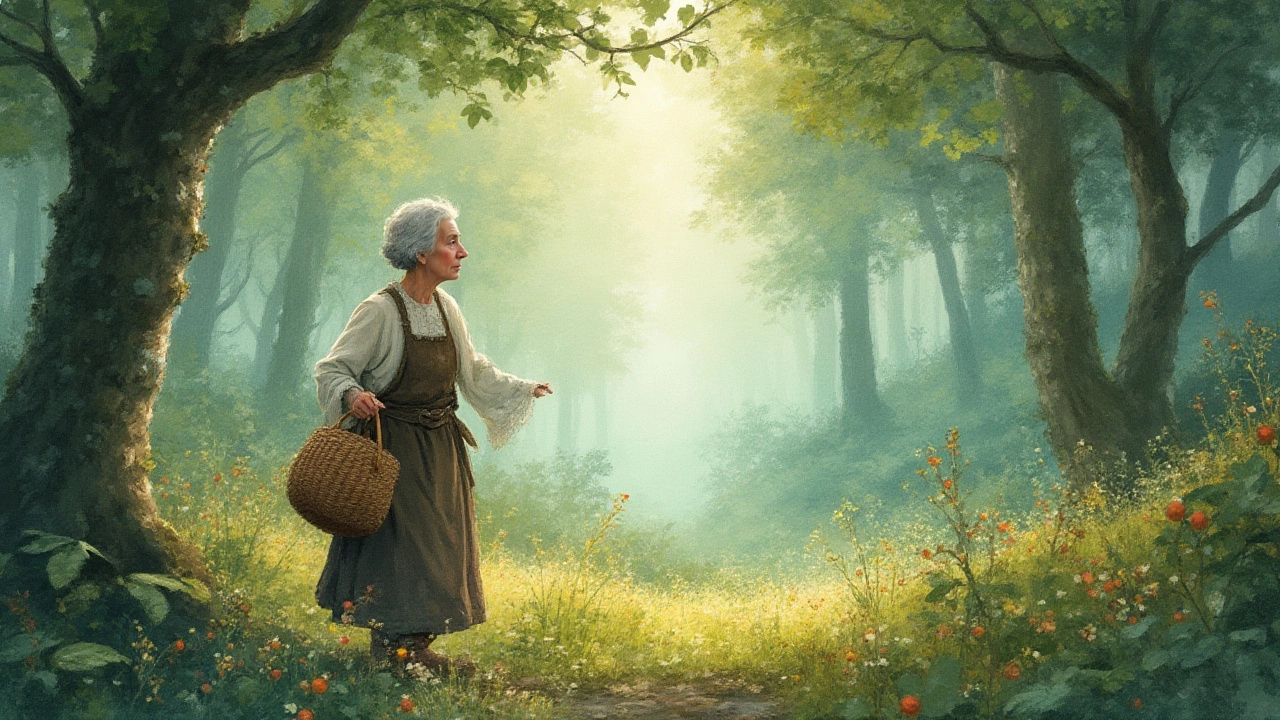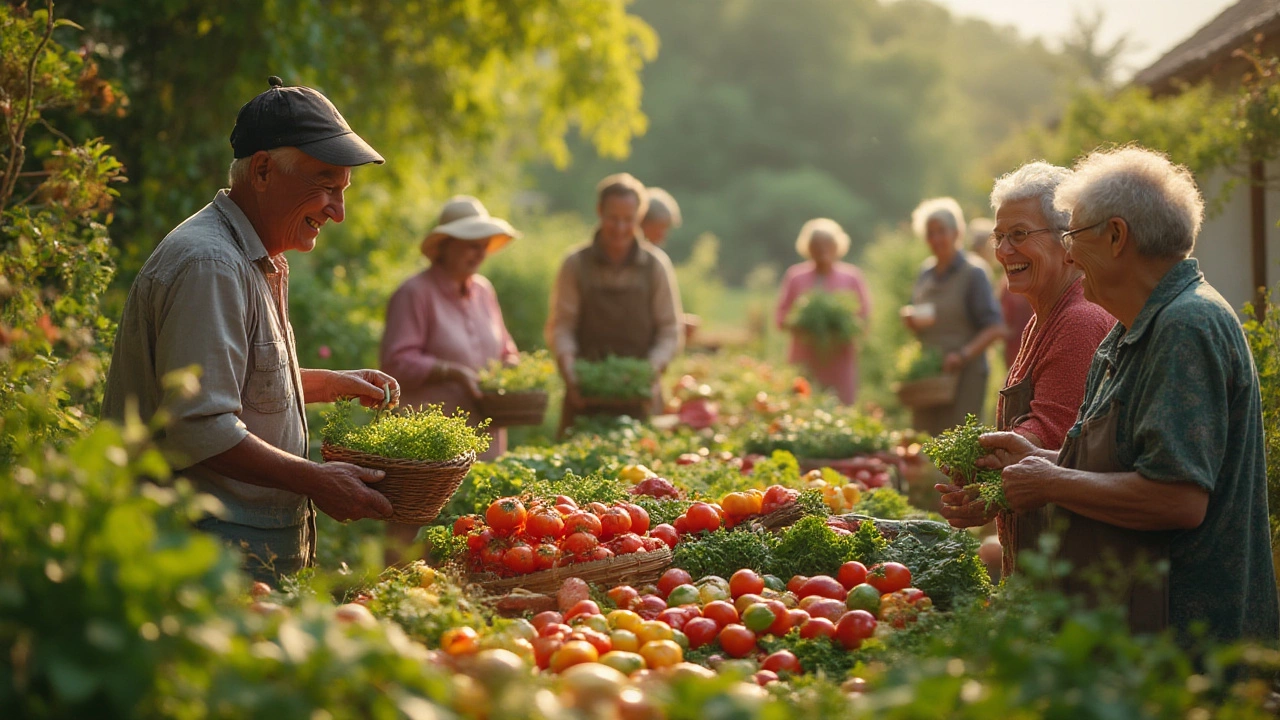Outliving everyone around you isn’t some ancient myth or science fiction trope. Right now, there are folks shuffling to their 110th birthday, getting birthday cards from several generations of their families – and yes, most media breathlessly asks: what are these super-agers eating? Is salad the secret to blowing out so many candles? Or does a spoonful of steak sneak into their story? It turns out, the diets of the world’s oldest living people are way more fascinating, and a lot messier, than you’d imagine from headlines. And if you’re picturing a die-hard vegan preaching tofu at 114, your mental image might need a little tweaking.
The Real Plates of Centenarians: Fact-Checking the Vegetarian Myth
You’ll spot a pattern pretty fast among the oldest people tracked by science: their diets are rooted in plants, but rarely strict vegetarian. Take Kane Tanaka, who lived to 119 in Japan, or Jeanne Calment of France, who reached 122. These legends grew up eating what was available—rice, yams, fish, vegetables, and a little meat when they could afford it. For most of human history, eating like a vegetarian happened out of economic necessity, not as a philosophy or choice. When meat showed up, it was often a treat, a sliver at a festival or a village gathering, not the norm at every meal.
Dig into the Blue Zones research, especially by journalist Dan Buettner, and you’ll see some real-life data. Let’s look at the five original Blue Zones—regions with high rates of people living to 100 and beyond: Okinawa (Japan), Sardinia (Italy), Nicoya Peninsula (Costa Rica), Ikaria (Greece), and Loma Linda (California). Here’s the wild part: only Loma Linda is overtly vegetarian, due to its population of Seventh-day Adventists, who eat largely vegan or vegetarian for religious reasons. The rest? Their meals are crazy-high in beans, grains, greens, and tubers, but animal products creep in, just way less often than you’d see on the average American or European table.
| Blue Zone | Main Diet Staples | Level of Vegetarianism |
|---|---|---|
| Okinawa (Japan) | Sweet potatoes, tofu, greens, fish | Mostly plant-based, but not strictly vegetarian |
| Sardinia (Italy) | Fava beans, whole grain bread, goat cheese, occasional pork/lamb | Primarily plant-based, but includes some animal products |
| Ikaria (Greece) | Lentils, potatoes, wild greens, olive oil, some goat’s milk | Plant-forward, not fully vegetarian |
| Nicoya (Costa Rica) | Black beans, corn tortillas, squash, the occasional chicken or pork | Mostly vegetarian, but animal foods appear |
| Loma Linda (California) | Various vegetables, whole grains, nuts, little to no animal products | Predominantly vegetarian |
Now, these facts don’t mean eating meat is the ticket to a three-digit age. If anything, the evidence screams that regular, massive servings of steak and cheese are not part of the centenarian diet at all. Plants absolutely dominate, but it’s rare to see strict vegetarianism unless religion steps in. So, if you’re hoping to tie your entire longevity strategy to cutting out every animal product, the world’s oldest folks aren’t backing that vision. They’re just not pounding burgers every week either.

What Centenarians Actually Eat: Lessons and Surprises
So what’s on the menu day-in and day-out for these long livers? Simplicity is the rule, not gimmick. Take a look at Okinawa again. Sweet potatoes used to make up 70% of caloric intake before World War II. Yes, they eat fish, but mostly tiny amounts as flavorings instead of the main course. The bitter melon salad, purple sweet potato, and miso soup—all loaded with plant power. Similarly, Ikaria’s elders are famous for their wild greens, often foraged, plus loads of legumes, and a little goat cheese here and there.
Sardinian villagers savor minestrone bursting with beans and barley, or snack on simple sourdough bread with a splash of olive oil and the occasional chunk of sheep’s milk cheese. In Costa Rica’s Nicoya, daily black beans and maize tortillas are non-negotiable, with fruits like papaya or mango gracing breakfast. Chicken or pork? Maybe, but not every day. And time after time, you don’t see snacks loaded with ultra-processed cereal bars, sodas, or piles of refined sugar. There’s very little added sugar in these scenes, period. Giant dessert platters or double cheeseburgers play no role. As for the party crowd: Jeanne Calment famously ate a little chocolate every single day and drank wine, but nobody pinned her longevity to cocoa beans alone.
Loma Linda’s Adventists are a standout because they actually tracked the difference between plant-based and meat-eating members. Their findings? Adventists who followed vegan or strict vegetarian diets enjoyed about 7-10 years more life expectancy than average Californians. Nuts, whole grains, and legumes came out on top in the health stats. If science was looking for proof that plants help, it’s hard to ignore a group that logs life spans that long while skipping the daily steak.
- Nuts are a recurring snack—Almonds in Loma Linda, walnuts in Ikaria. About a handful a day, not a pound.
- Beans and legumes are everywhere. It’s not about protein packs: it’s simplicity, fiber, and steady energy.
- Fruits and vegetables make up the bulk of most meals—seasonal, local, not flown in from across the world.
- Animal products (when eaten) show up in tiny portions—usually for flavor or “special days.”
- Fermented foods crop up often—think miso in Japan, yogurt in Greece, sourdough in Sardinia.
This isn’t abstract science. It’s backed up by the decades-long Adventist Health Study, Japanese government health stats, and research by the European Union on Mediterranean diets. The pattern isn’t about eating no animals—just very few, very infrequently. It’s about letting plants command the plate and making meat the rare backup singer.

Tips for Eating Like a Centenarian: What to Try, What to Skip
If you want to nudge your way toward this kind of eating, the magic is in the shift, not the strictness. You don’t have to label yourself a vegetarian to get the benefits. Consider these move-the-needle strategies drawn from the eating habits of people nearing—or passing—the century mark:
- Let plants dominate your plate. Aim for vegetables, whole grains, and beans to make up most meals, and use animal foods as “garnish,” not the centerpiece.
- Pick whole over processed. The older diets had almost nothing to do with foods in wrappers and cans. Beans, sweet potatoes, seasonal greens, berries, and nuts win big.
- Eat until you’re satisfied, not stuffed. Many centenarians follow “hara hachi bu,” the Okinawan saying for eating until about 80% full.
- Fermented foods add both flavor and healthy bacteria, from miso and kimchi to natural yogurt and sourdough.
- Keep sugar low. Treat fruits as dessert, and enjoy sweets at special celebrations, not every day.
- Snack like it’s 1910—meaning mostly not at all. If you need something, reach for nuts or fruit rather than chips or cookies.
- If you eat meat or fish, buy the best you can afford and keep portions tiny—think flavor, not volume.
- Make eating social, not solo. Most Blue Zone meals happen at a table with family or friends.
It’s tempting to hunt for the single “superfood” or silver bullet recipe, but the truth is messier. The world’s oldest people build their years from thousands of unremarkable, simple choices and shared meals. There’s nothing magical in the spinach or mystical about the mackerel. Think less about categories and more about frequency. If the last five meals you cooked were mostly plants, you’re already treading a well-worn (and well-aged) path.
Here's a quick reference table from the Adventist Health Study on how certain foods stack up for longevity:
| Food Type | Impact on Longevity |
|---|---|
| Daily Nuts | Up to 2 extra years |
| Beans (at least 3x/week) | Lower heart disease rates |
| Whole grains | Improved gut and heart health |
| Red meat (frequent servings) | Shorter average lifespan |
| Fruits & Vegetables (6+ servings/day) | Reduced risk of cancer and diabetes |
The takeaway? If you’re trying to eat for age, you don’t have to cancel your next dinner out or reject every family BBQ. You might just want to fill most of your grocery basket with what would have looked familiar to a farmer’s market shopper in 1920. Then, when you do pick up that fillet or cheese, treat it like gold leaf—a little goes a long way.
So, are the oldest living people vegetarians? For the most part, no—they’re accidental near-vegetarians, letting beans, plants, and grains do the heavy lifting. If you want to grab their secret, skip the strict labels and study the plate: less animal, more root and leaf, and plenty of old-school simplicity. That’s the real recipe for a ridiculously long life.

